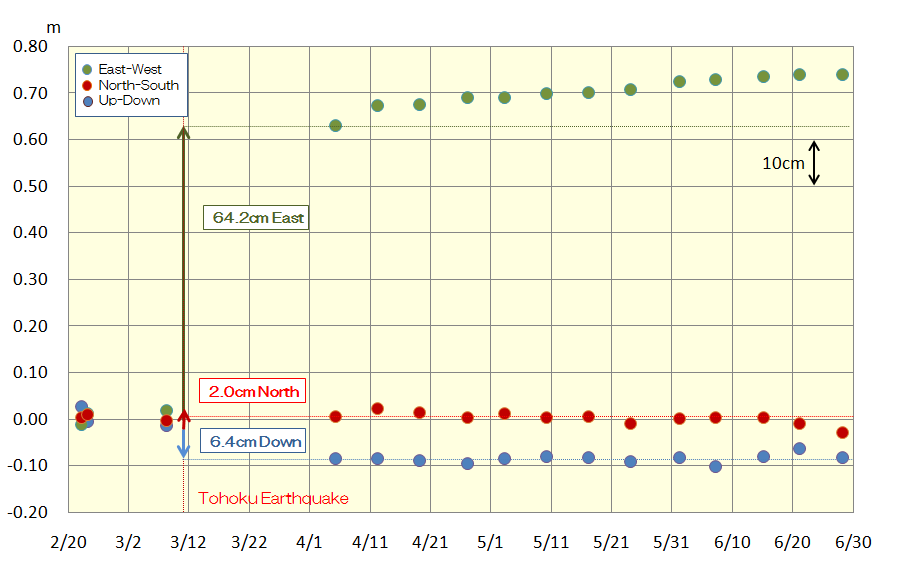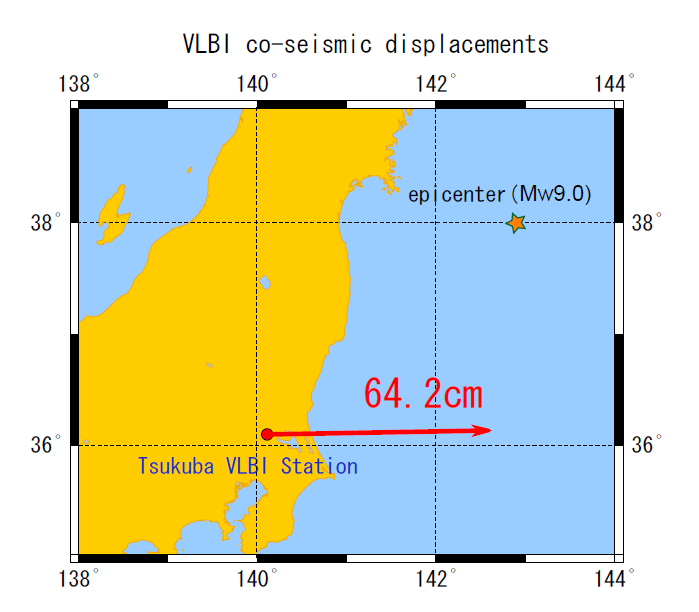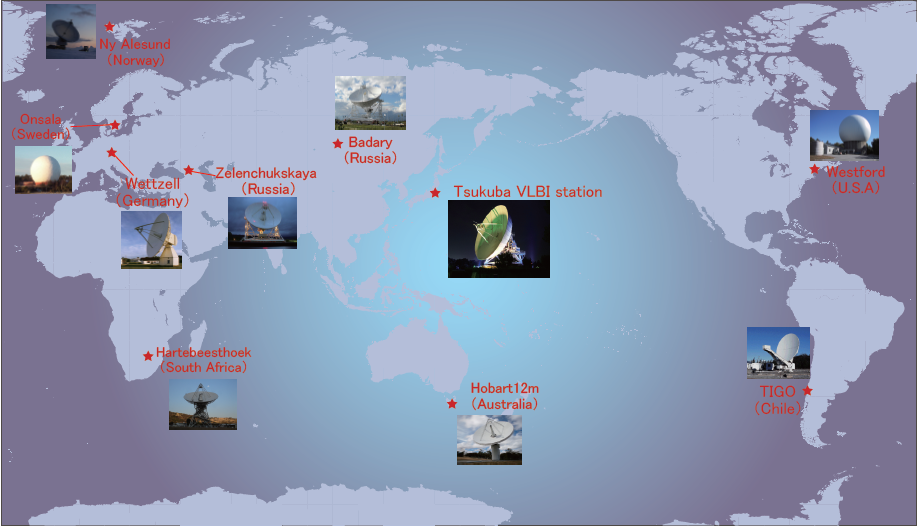The 2011 off the Pacific coast of Tohoku Earthquake
The observed displacement at VLBI station
〜 Coseismic and Postseismic displacement 〜
|
|
We performed the international VLBI observations before and after the 2011 off the Pacific coast of Tohoku Earthquake, and calculated the coseismic or postseismic displacement by the analysis of the observed data.
|
Horizontal and Vertical displacement at Tsukuba VLBI station
|
|
We compared the global positions of the Tsukuba VLBI station between preseismic (Mar.8) and postseismic (Apr.5), and found that the displacement was 64.2cm east, 2.0cm north and 6.0cm downward. The position has been still moving after the earthquake. We plan to continue the international VLBI observations and data analysis for monitoring the postseismic displacement. (click the figure above to enlarge)
|

|
 ===== Analysis Condition =====
===== Analysis Condition =====
Estimated Parameter
Station position :
X, Y, Z (per session)
Source position :
right ascension and declination
Earth orientation parameter :
Polar motion (X,Y,Xdot,Ydot)
dUT1, dUT1dot
Nutation offset
Atmosphere delay (Zenith wet) :
every 20 minutes
Clock parameter :
every 60 minutes
Atmosphere gradient :
every 8 hours
A-priori
Station position / velocity: ITRF2008
Source position : ICRF2
Earth orientation parameter:
USNO Finals from NASA/GSFC
Constraint
Station position : No Net Rotation (NNR) and No Net Translation (NNT) except stations around Japan.
|
|
International VLBI observation
|
|
 GSI performs 24-hour international VLBI observations at the Tsukuba VLBI station every week under the International VLBI Service (IVS). Due to the strong aftershocks of the earthquake, we could not perform the VLBI observations for about one month, but we restarted the international VLBI observations on April 5. The another VLBI stations over the world (Germany, U.S.A, and Australia etc..) also participated in the VLBI observations. Thus, we can obtain the global positions of the VLBI stations with an accuracy of a few millimeters from analysis of the observated data.
The right figure shows the participating stations in the international VLBI observation on April 5. (click the figure above to enlarge)
GSI performs 24-hour international VLBI observations at the Tsukuba VLBI station every week under the International VLBI Service (IVS). Due to the strong aftershocks of the earthquake, we could not perform the VLBI observations for about one month, but we restarted the international VLBI observations on April 5. The another VLBI stations over the world (Germany, U.S.A, and Australia etc..) also participated in the VLBI observations. Thus, we can obtain the global positions of the VLBI stations with an accuracy of a few millimeters from analysis of the observated data.
The right figure shows the participating stations in the international VLBI observation on April 5. (click the figure above to enlarge)
|